Do you ever feel like you are playing a ‘social media approval ping-pong’ game with your clients?
You know, those back-and-forths of feedback, adjustments, and revisions – only to be met with yet another round of changes? It’s no wonder that 92% of marketers report approval delays as the main culprit for missed deadlines.
But painting approval workflows in a negative light is a disservice to the incredible value they can bring to agency-client relationships.
When streamlined and managed wisely, approval workflows can be a powerful ally that strengthens the connection between agencies and their clients.
Read on to discover how.
What are Approval Workflows?
Social media marketing projects are much more than just creating and publishing a post. They are the collective work of multiple teams, stakeholders, and clients. All of them attempt to keep their heads above the ever-changing waters of consumer trends, emerging technologies, and industry regulations. Approval workflows are the life jackets that keep everyone afloat in this chaotic sea of content production.
Simply put:
Approval workflows are those processes that allow a project or item to be routed from one person or team to another for that much-coveted ‘thumbs up.’ They define the rules and stages a piece of content must pass through before becoming eligible for publication.
Here’s a diagram from the folks at Microsoft that visualizes the steps of a typical approval workflow:

Common Issues Plaguing Inefficient Approval Workflows
Approval processes can easily become clogged if not managed carefully – and this is where agency-client relationships are often tested.
Why?
For one thing, stakeholders involved in approval workflows may not always share the same vision, priorities, or even understanding of the project as you.
Where you may see a clever play on words, they could view it as too edgy.
Where you might think a certain color is perfect, they may find it too jarring.
Where you might think the layout is perfect, they may want it torn up and reworked.
If not handled properly, these can quickly fire up tensions in an otherwise harmonious agency-client relationship.
Although 90% of agencies claim to thoroughly understand their client’s businesses, only 65% of the other half agree. Clearly, there’s a severe disconnect between client expectations and agency perceptions.
The key to maintaining a positive relationship is to anticipate any potential hiccups in the approval process and find ways to avoid or mitigate them.
Here are a few hallmarks of an unruly approval workflow to watch out for:
Poor Communication
Agency-client relationships can’t thrive under the weight of poor communication. Shaky communication often leads to lengthy approval wait times, lack of visibility into project progress, and other issues that can seriously impact your workflow.
Forrester Consulting found that every hour a product team spends on heads-down work, they spend 48 minutes waiting on decisions. This equates to more than 3.5 hours of “wait time” in an average eight-hour workday. If your approval processes allow such delays, it’s time to look into a better system.
Inconsistent Feedback
It’s not uncommon for clients to provide inconsistent feedback on the same content at different stages in the approval process. Or worse, for feedback to change mid-stream.
This leaves creatives and developers exasperated, as they’re left to reconcile two sets of feedback that don’t quite add up. These disruptions can stifle the creative process and turn agency-client relationships sour.
Lack of Clarity
Approval approvals often get muddled without clarity on the project scope, goals, and expectations. A supplier of shipping units is unlikely to know social media design jargon, and their social media agency might not be familiar with shipping lingo.
This is when misunderstandings and miscommunications can quickly snowball, often resulting in time-consuming requests for clarification and unhelpful feedback.
Elizabeth Saloka of Brain Traffic has created an impressive chart that perfectly showcases the contrast between good and bad client feedback:
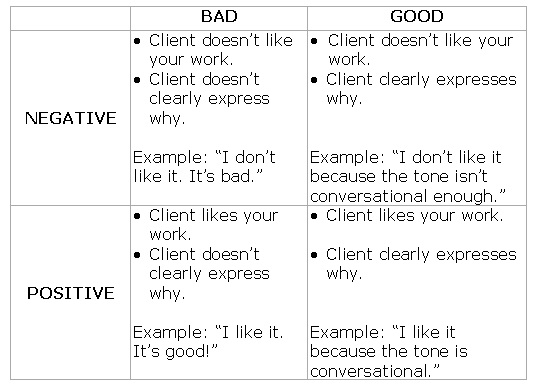
Too Many Approvals
Having too many approval rounds or too many approvers in the mix can also burden your agency-client workflow.
When collateral review and approval become mired in endless loops of redlining and revisions, it’s easy for projects to become derailed and deadlines to slip. Moreover, excessive approval rounds can lead to approval fatigue, in which the initial creative intent of the project gets lost or watered down.
How Approval Workflows Strengthen Agency-Client Relationships?
We are not big on cliches, but if there’s one that fits the bill here, it’s the phrase…
“There’s no such thing as problems, only opportunities.”
Sure, after going through all the challenges of inefficient approval workflows, you may be tempted just to put your head down and power through. However, if you take the time to identify where the breakdowns are happening, you can turn many of the same problems into opportunities to strengthen your agency-client relationship.
For instance, if excessive approvals are causing your projects to lag, introduce a stage-gate process to punctuate the approval process. This helps create checkpoints and establish clear roles for decision-makers. The added accountability and clarity in the process will speed up decision-making while allowing you and your client to collaborate more seamlessly.
This small but powerful example proves approval workflows don’t have to be the bane of your existence. In fact, by taking control of your approval processes, you can transform them from time-suck challenges into opportunities to strengthen your agency-client relationships.
Here’s how:
Reducing Misunderstandings and Conflicts
It takes one tiny misunderstanding or misinterpretation to send an entire project off the rails. Consider the familiar example of resource planning and allocation conflicts to better illustrate this concept.

As an agency leader or project manager, you might find yourself amid a heated battle between two teams over the same resource. Or you might have approved leave requests without checking if the team members had any other commitments. But with a proper approval workflow in place, have full sight of your resources and their availability, leaving less room for conflicts. The same can be attributed to the creative project approval process.
Constructing a well-defined approval step into your social media publishing workflow can bring visibility into what’s approved and what needs further clarification. That way, you can prevent both sides from any costly blunders or off-brand media messages.
Let’s take the Department of Education’s social media faux pas as an example.
Making a typo is usually not catastrophic unless it’s the Department of Education doing it. They first tweeted a W.E.B Du Bois quote with his name misspelled.
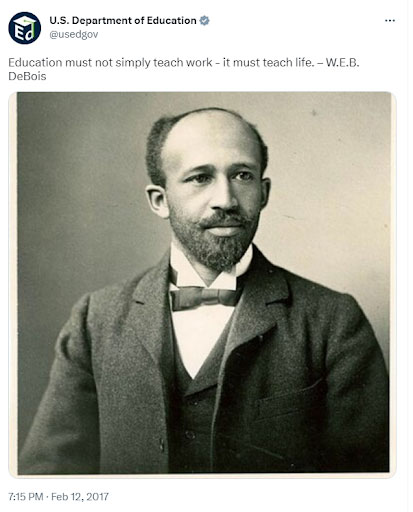
They then followed it up with an apology that included the word ‘apology’ misspelled! Not the best look for a government agency.

Now, if they had a proper social media approval workflow, they could have avoided the chances of this typo-ridden disaster. Someone would have spotted the error before it was published, saving them the embarrassment.
Adding a clear approval step to your publishing workflow will safeguard your team from embarrassing mistakes and guarantee that the client only experiences first-rate work. This will foster trust between your agency and the client, creating good rapport and long-term loyalty.
Improve Communication With Clients
This service is about managing a company or marketer’s social media presence. Your agency can offer this service to manage a brand’s social media existence on multiple platforms.
Getting bogged down in multiple avenues of communication with your clients is something we’ve all faced before. As organizations grow, it’s common for different departments or teams to communicate on separate channels.
You might use Google Docs or a spreadsheet to share content with clients, an email thread for approval and feedback, and Slack for back-and-forth approval discussions. All this dispersal of communication and bouncing between different channels can get chaotic, letting vital details and context get lost.
In The Naked Truth report by agency RPA and USA Today, the authors found sloppy communication to significantly erode the trust between agencies and their clients.

“We’re good at communicating at a mass scale, but terrible at communicating internally,” says Tim Leake, SVP of growth and innovation at RPA. According to him, communication breakdown happens at every step.
The simplest way to get around this during the approval process is by introducing a centralized communication hub to help you consolidate all your review-related communication into one system.
It’s like having a single control center for managing your approval conversations and decisions. This will help ensure no critical details or context disappear in the shuffle, enabling a more productive exchange of information between you and the client.
Show the Value of Your Work
Over the past few years, the dynamics between agencies and their clients have taken an unexpected turn. With a surge of competition, brands often seek to partner with multiple agencies to find the best fit for their needs.
Comparable to millennials’ reputation for job-hopping and fickle loyalty, brands have become increasingly selective when selecting the right agency. Figures demonstrate that ⅔ brands work with three or more digital agencies simultaneously compared to only ¼ last year.
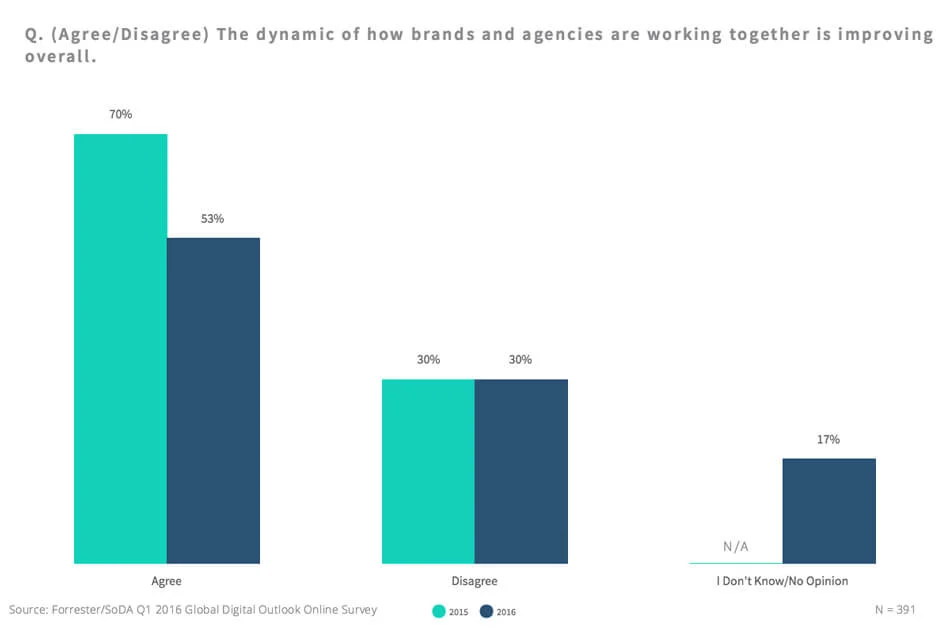
Moreover, many organizations now opt to keep their digital marketing expertise internally – perceiving this approach as reason enough not to outsource the work necessarily.
By introducing social media approval workflows, you can help turn the tide in your favor and demonstrate the value of your services. A well-structured approval process allows agencies to go beyond simply delivering reports on the performance of their campaigns and posts. Instead, it enables clients to see and understand your social media strategies in action.
How much effort goes into each post?
What time and resources do you devote to creating content?
How does the agency factor in a client’s feedback?
These are all questions that a good approval workflow will help answer.
With an improved understanding of what goes on beneath the surface, clients are better equipped to appreciate the value of your work and trust you with their brand.
Best Practices for Improving Your Approval Workflows
Are your review and approval processes feeding into your agency-client relationships?
A shaky approval workflow can extend the time, cost, and effort needed to approve a piece of content. This often induces frustration and an overall decline in productivity – crippling creativity and progress.
Some 14% of marketers reported canceling projects in 2021 because of late approvals and around 1 in 10 organizations have published mistakes following lapses in review steps.
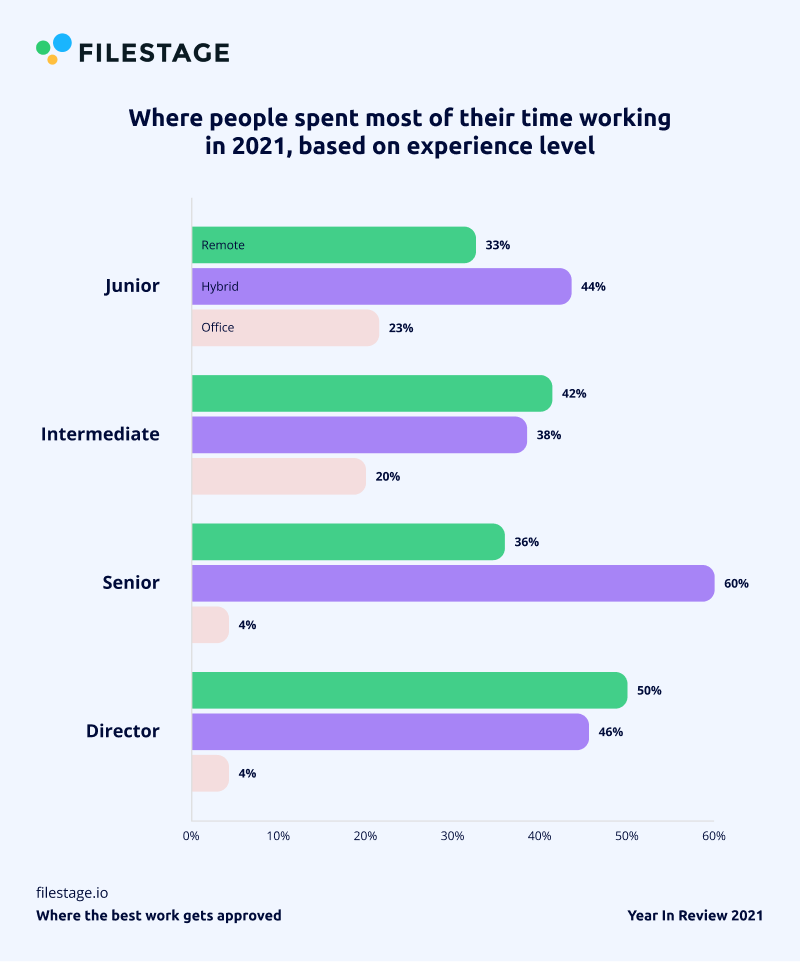
The need of the hour is a structured approval workflow that empowers your agency-client relationships with utmost clarity and confidence.
Here are some best practices to help you get there:
1. Leverage the Latest in Tech
The unforgiving truth of today’s digital age is that businesses that ignore technology often fail to achieve growth, relevance, and client satisfaction. In other words, if you don’t keep up with the times, your clients won’t trust you to deliver their desired results.
Companies court a greater risk of becoming obsolete when their leaders are reluctant to implement the latest technological trends.
Stats reports that 55% of companies without the right technology to implement a digital transformation believe they would lose market share in less than a year. Only leaders who embrace disruptive technologies can expect to revitalize their operations and catapult their success to greater heights.
If you want your approval workflows to reflect your brand’s commitment to innovation, you’ll need to integrate the most up-to-date technological solutions into your system. Some tech tools that could help optimize your processes include:
Social Media Collaboration Tools
have revealed that 89% of creatives long for a simpler approval system that encompasses deadlines, feedback, and tasks within one platform.

Collaboration tools like SocialPilot allow you to create separate teams and assign different access levels, such as managers, digital marketing heads, content creators, etc. It also offers seamless content approvals, guaranteeing that each piece of content goes through the required checks.
QR Codes
QR codes are patterned square blocks that hold data and can be decoded by a smartphone camera. Utilizing QR codes, you can effortlessly exchange content and track approvals or get sign-offs on the go.
Additionally, these same codes that aid with simplifying the approval process can also help enforce security compliance during it. You can assign exclusive access QR codes to restrict content viewing or editing to authorized users.
Plus, they’re effortless to create and deploy. All you have to do is choose a reliable and trustworthy QR code generator, and you’re good to go.
Workflow Automation Software
Workflow automation software can help you create a smooth, end-to-end process for collaborative workflows. These tools provide a centralized project view, enabling you to stay organized and monitor progress. They also offer advanced features like automated alerts and audit trails to keep everyone up-to-date on the latest project developments.
But perhaps the most important feature of workflow automation software is that it eliminates the manual steps from the approval process. This equates to more efficient and accurate outcomes, significantly reducing the possibility of errors or omissions.
Remember to look for an automation tool with a simple-to-use interface and no-code setup. That way, even individuals who may not be familiar with coding principles can readily get the hang of it. Before you know it, your approval workflow will feel like a well-oiled machine.
2. Define Clear Roles and Expectations
Before you set out to design an efficient review process, define the roles and responsibilities of each individual involved. Clearly defined roles and expectations help ensure the review process goes smoothly and quickly.
The agency should set specific guidelines for its team members to follow regarding the review process, such as:
- Who will receive comments?
- What will be the expected turnaround time at each stage?
- Which documents need to be approved by whom?
By knowing each party’s specific roles, responsibilities, and expectations, everyone can work together efficiently to ensure a successful approval process.
3. Align Version History
When it comes to approval cycles, there is far more to it than just a single review. Most marketing collaterals and campaigns involve multiple reviews, edits, and iterations. This can quickly become chaotic if an effective system is not in place to manage version history.
The right version control system can do wonders in ensuring that all users have access to the most up-to-date document version. This helps prevent confusion and ensure accuracy during any review process.
4. Prepare a Schedule
Establish a schedule to guarantee that all necessary steps in the social media approval process go as scheduled. This time frame should offer everyone a reasonable window to fulfill their roles.
To do this, follow these steps:
- First, map out the average production time needed to create a certain number of posts.
- Then, factor in the time it takes to edit, schedule and obtain approval.
- Work backward to set realistic deadlines for each step in the approval workflow.
Thoughtfully crafted timelines in this way can help ensure that no steps in the process are rushed or overlooked.
5. Review and Update Your Workflow
Even the most efficient processes can become dated over time. That’s why it’s essential to revisit your workflow regularly and ensure it still meets all stakeholders’ needs.
Look for any areas where efficiency or accuracy could be improved. Listen to client and team members’ feedback, then modify the process accordingly. Regular optimization lets you keep your approval process looking and feeling freshest while ensuring smooth collaboration between all parties.
6. Ensure Consistency
Having a client-specific style guide that informs and guides content creation is necessary for maintaining a consistent brand aesthetic. But even with a style guide in place, the combined wisdom of all stakeholders is often needed to ensure a unified look and feel across all channels.
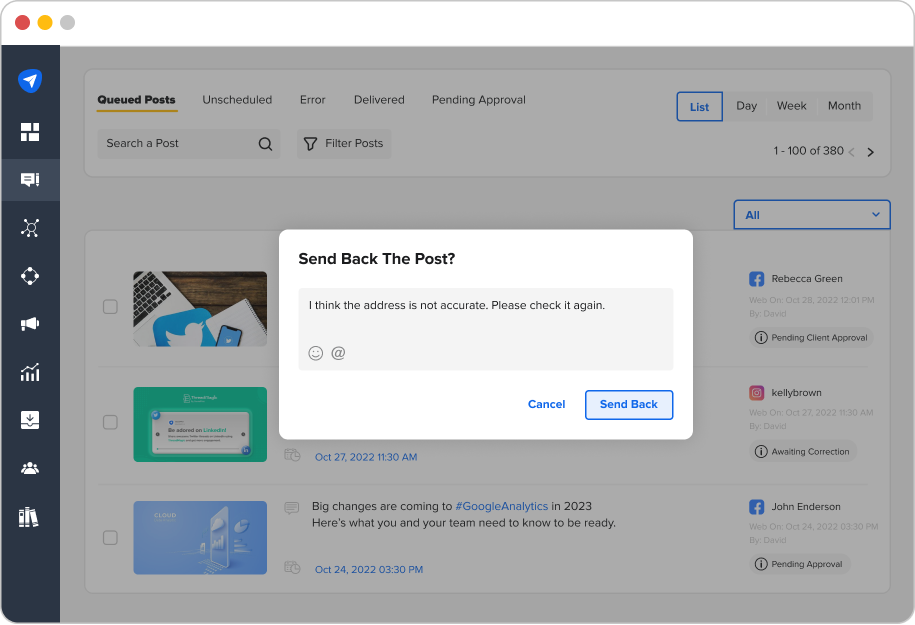
Well-put-together reviews and feedback stages can help you catch any imperfections before they reach the public view. After all, the cost of correcting an inconsistency after launch is far greater than the effort and time spent to eliminate them beforehand.
7. Encourage Productive Collaboration
The review process can be one of the social media content creation’s most time-consuming and exasperating parts. Sending countless emails or going back and forth over comments distorts the workflow and disrupts the posting schedule.
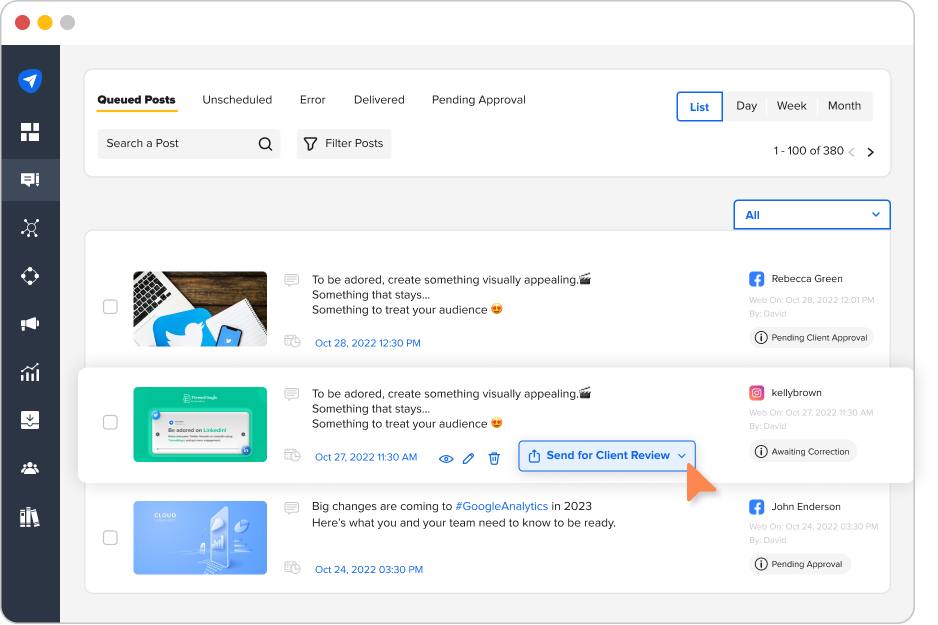
Streamlining this process with an approval workflow allows for a swift exchange of information between all stakeholders. In this way, everyone can provide feedback and collaborate more effectively, enabling them to work together towards the same goal—content that meets everyone’s approval.
8. Retain and Grow Business
Research shows that digital marketing agencies attribute their success to positioning themselves as strategic partners for their clients. Utilizing approval workflow techniques further strengthens these relationships, leading to improved collaboration, efficiency, and quality.
This, in turn, equips your customer with the confidence that their content is up to the highest standard. As a result, your clients will remain loyal and even recommend your services to others.
Referrals still make up a huge chunk of new business for agencies. A staggering 93% of agencies count on referrals to help them bring in new business.
Case Studies
To further illustrate the power of approval workflows, let’s look at some real-world examples.
1. GroupM
GroupM, a global media investment management company, wanted to improve its clients’ approval process. They needed something that would enable them to collaborate and organize feedback more efficiently without clogging their inboxes.

To that end, they implemented a properly structured approval system that enabled them to track feedback in real-time, make precise comments on the content’s details, and pass it on quickly to the content creator for the next revision.
The result:
GroupM saw a 25-30% decrease in emails regarding content approvals and experienced far fewer miscommunications.
2. Novembre
Novembre is a consulting agency specializing in integrated marketing strategies, sales promotion, and digital and social media strategies.
With its growing list of projects and customers, Novembre needed a way to manage the time-consuming and complex approvals process. To achieve a more efficient workflow, Novembre implemented a structured approval system that enabled them to collaborate and exchange feedback with their customers in a much more organized manner.

This new system helped keep various departments connected throughout projects, making it much easier to manage from beginning to end.
As a result of this helpful change, Novembre could successfully juggle multiple projects, reviews, and corrections with utmost precision.
Unlock Agency-Client Synergy with Approval Workflows
Agency-client relationships are complex and often unpredictable. However, building and reinforcing trust with efficient approval processes can unlock true synergy between your agency and client.
So, if you’re looking for ways to streamline your collaboration process and ensure that the content you create meets everyone’s expectations, an effective approval workflow system might be the ideal solution. With such a system, agencies and clients can trust that their content is created perfectly with minimal effort and disruption.
It’s a win-win for everyone!




